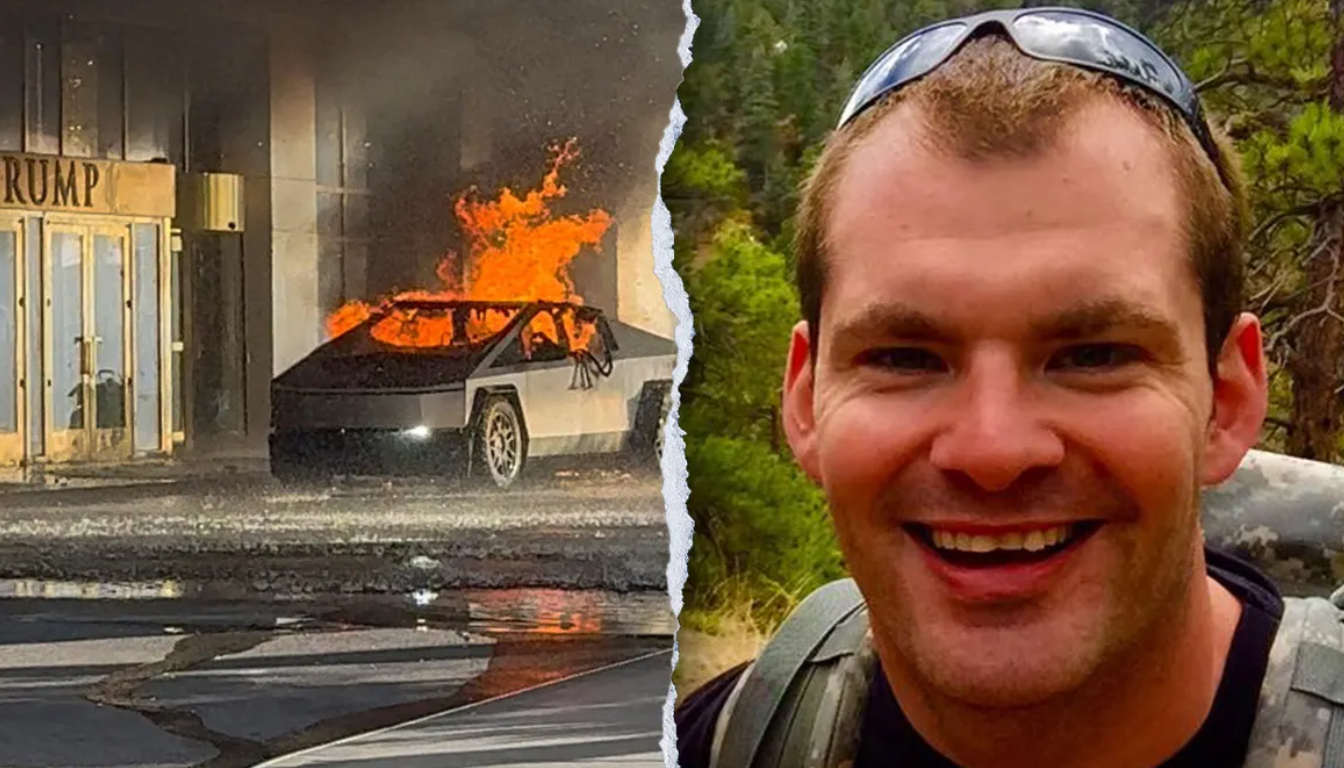Authorities have uncovered a troubling aspect of the Tesla Cybertruck explosion outside the Trump International Hotel in Las Vegas: the suspect, 37-year-old Army veteran Matthew Livelsberger, used artificial intelligence tools to plan the attack. This revelation comes from a six-page manifesto recovered from Livelsberger’s phone, offering insight into how generative AI can be exploited for malicious purposes.
The explosion, which occurred on New Year’s Day, resulted in Livelsberger’s death and left seven others injured. Investigators are still working to piece together his motivations and the methods he used to carry out the attack.
The Manifesto and Its Details
The manifesto reveals Livelsberger’s belief that he was under government surveillance during his travel from Colorado to Las Vegas. This paranoia seems to have fueled his actions. However, authorities confirmed he had no prior criminal record or known history of extremist activities.
Assistant Sheriff Dori Koren, who is leading the investigation, stated that Livelsberger relied on generative AI tools, including ChatGPT, to research and plan the attack. This marks a disturbing example of how widely available AI tools can be exploited for harmful purposes.
The manifesto details not only Livelsberger’s thoughts but also his systematic use of AI to refine his plans. Generative AI allowed him to access and organize information efficiently, providing a significant advantage in planning the attack.
The Role of AI in the Incident
Generative AI platforms like ChatGPT are designed to assist users with tasks such as writing, research, and brainstorming. While these tools are equipped with safeguards to prevent misuse, this incident highlights the limitations of those protections.
Livelsberger’s use of AI demonstrates how determined individuals can manipulate such tools to bypass ethical restrictions. By carefully structuring prompts and potentially combining information from multiple sources, he was able to leverage AI for illicit purposes.
This exploitation of AI reflects a growing challenge. As the technology becomes more powerful and accessible, it risks empowering individuals with harmful intentions.
The Explosion and Its Aftermath
The explosion occurred outside the Trump International Hotel on a busy New Year’s Day, shocking the city of Las Vegas. The Cybertruck was destroyed in the blast, and seven people suffered injuries from flying debris. Livelsberger, who was inside the vehicle at the time, did not survive.
Emergency responders quickly secured the scene and evacuated nearby areas. Although none of the bystanders’ injuries were life-threatening, the attack’s psychological impact has left residents and tourists shaken.
Authorities continue to analyze evidence, including the manifesto and Livelsberger’s digital footprint, to better understand his motivations and planning.
The Rise of AI Exploitation
Livelsberger’s case is part of a concerning trend in the misuse of AI. Generative AI tools, originally intended for productivity and innovation, are increasingly being repurposed for criminal activities.
Recent reports have highlighted how AI is used to create phishing emails, deepfake scams, and even malicious code. The low barrier to entry for these tools means that individuals without technical expertise can carry out sophisticated operations.
By democratizing access to powerful resources, generative AI has inadvertently created new opportunities for bad actors. This dual-use nature of the technology presents a significant challenge for developers and regulators.
Ethical and Regulatory Questions
This incident raises pressing ethical and legal questions about the use of AI. While platforms like ChatGPT are built with safeguards, they are not infallible. Developers continually update their systems to block misuse, but resourceful individuals can find ways around these restrictions.
For law enforcement, the task of monitoring and intervening in cases of AI misuse is daunting. Generative AI itself is neutral—it’s a tool that can be used for both beneficial and harmful purposes. The challenge lies in preventing its exploitation without stifling legitimate innovation.
Some experts advocate for stricter controls, such as licensing for high-powered AI models or monitoring for suspicious activity. Others warn against overregulation, which could hinder progress and limit access to beneficial applications. Striking a balance will require collaboration between governments, tech companies, and civil society.
A Call for Greater Oversight
The Livelsberger case highlights the urgent need for better oversight of AI technologies. Policymakers must address the gap between rapid AI advancements and existing regulatory frameworks.
Tech companies may need to enhance their content moderation systems, using advanced methods to detect and prevent harmful uses. Public awareness campaigns can also play a role, educating users about the ethical implications of AI and discouraging its misuse.
This case also emphasizes the importance of international cooperation. The global nature of AI development and its applications means that effective oversight cannot be limited to individual countries. A unified approach will be necessary to ensure responsible use on a global scale.
A New Frontier for AI Policy
As the investigation into Livelsberger’s actions continues, the broader implications of this incident are clear. Generative AI has immense potential to revolutionize industries and improve lives, but it also carries significant risks.
By fostering responsible development and implementing thoughtful regulations, society can ensure that the benefits of AI far outweigh its dangers. Livelsberger’s actions serve as a stark reminder of what can happen when powerful technology falls into the wrong hands—and why vigilance is essential as AI continues to evolve.



